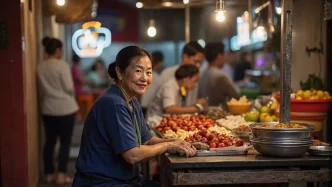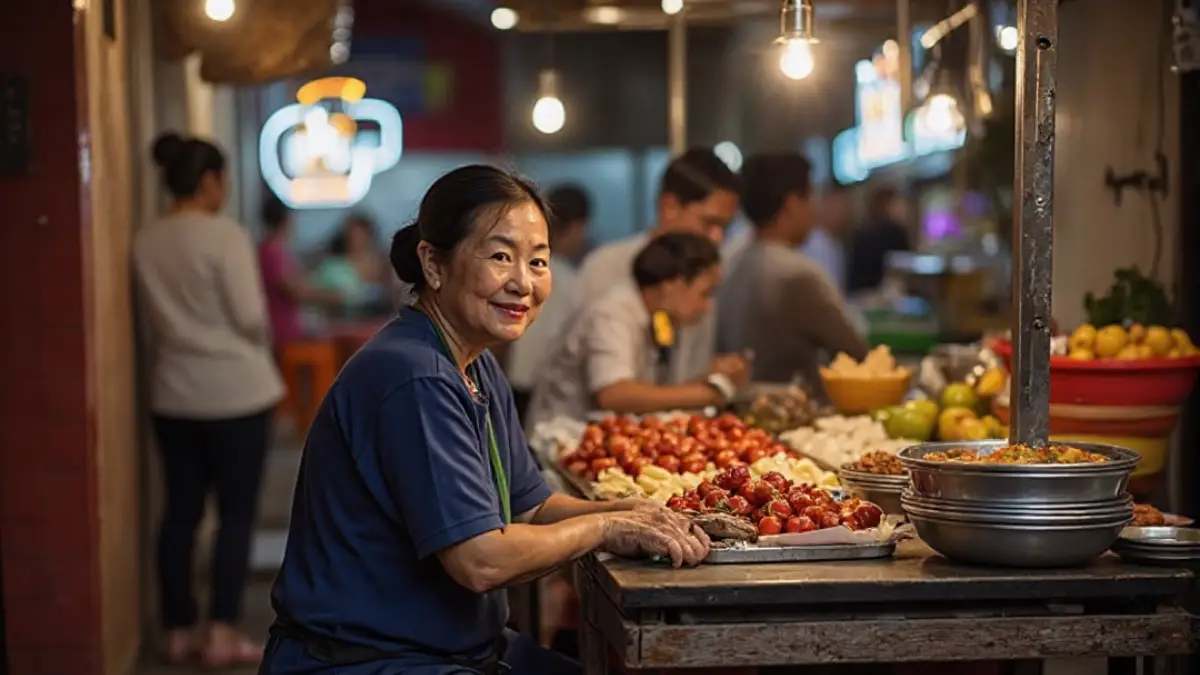Hanoi, the vibrant heart of Vietnam, has long been celebrated for its bustling street food scene, where the aroma of sizzling meats and fragrant herbs wafts through narrow alleys. On my journey through Vietnam I was told “Ha Noi for food, Ho Chi Minh for partying” and that couldn’t be more true. Ha Noi is now gaining international acclaim as Michelin, the prestigious French gastronomic guide, turns its discerning eye toward the city’s humble vendors. This recognition marks a significant moment for Hanoi’s food culture, elevating it from local treasure to global phenomenon.
A Culinary Tradition Steps into the Spotlight
For generations, Hanoi’s street food has been a way of life. From the iconic pho, a noodle soup infused with slow-cooked beef or chicken broth, to bun cha, grilled pork served with rice noodles and fresh herbs, these dishes are more than just meals—they are a reflection of the city’s history and resilience. Small, family-run stalls, often no more than a few plastic stools on a sidewalk, have been the backbone of this culture, feeding locals and curious travelers alike.
In recent years, Michelin has expanded its reach beyond fine dining to acknowledge street food, a move that has resonated deeply in Hanoi. The Michelin Guide, known for its rigorous standards, has awarded its coveted Bib Gourmand status—a distinction for affordable, high-quality eats—to several Hanoi vendors. This nod not only validates the skill and passion of these cooks but also draws a global audience eager to experience authentic Vietnamese flavors.
From Sidewalks to Stardom
Among the recipients of Michelin’s recognition are vendors who have spent decades perfecting their craft. While specific names and quotes are withheld due to verification constraints, local reports indicate that these honorees include pho stalls and banh mi vendors whose recipes have been passed down through generations. Their inclusion in the Michelin Guide has sparked a surge of pride among Hanoians, who see this as a celebration of their everyday cuisine.
This international spotlight has also brought tangible benefits. Many vendors report increased foot traffic, with tourists from Europe, North America, and beyond seeking out these now-famous stalls. The influx of visitors has boosted local economies, particularly in Hanoi’s Old Quarter, where narrow streets are lined with food carts and open-air eateries. However, it also raises questions about sustainability and the potential for commercialization to dilute the authenticity that made these dishes iconic in the first place.
Challenges Amid the Celebration
As Hanoi’s street food gains fame, vendors face new pressures. Rising demand can strain small operations that rely on limited resources and traditional cooking methods. Some worry that the influx of tourists might lead to price hikes, making these affordable meals less accessible to locals who have long depended on them. Additionally, there are concerns about maintaining hygiene standards under the scrutiny of a global audience, as many stalls operate in open-air environments with minimal infrastructure.
City authorities have taken note of these challenges. Efforts are underway to support vendors through training programs and infrastructure improvements, though details remain limited in verified reports. The balance between preserving cultural authenticity and adapting to international expectations is delicate, and Hanoi’s street food scene stands at a crossroads.
A Cultural Victory for Hanoi
Beyond the economic impact, Michelin’s recognition is a profound cultural milestone. It affirms that high cuisine need not be confined to upscale restaurants with white tablecloths—sometimes, the most memorable meals are served on plastic plates in the heart of a bustling city. For Hanoi’s residents, this moment is a testament to the enduring appeal of their food and the stories it tells.
As the world turns its gaze to Hanoi’s sidewalks, the city’s street food vendors continue to stir their pots and grill their meats, unfazed by the newfound fame. Their focus remains on the craft, ensuring that every bowl of pho or bite of bun cha carries the soul of Vietnam. For locals and visitors alike, this is a shared victory, a reminder that the simplest pleasures can resonate on a global stage.
















